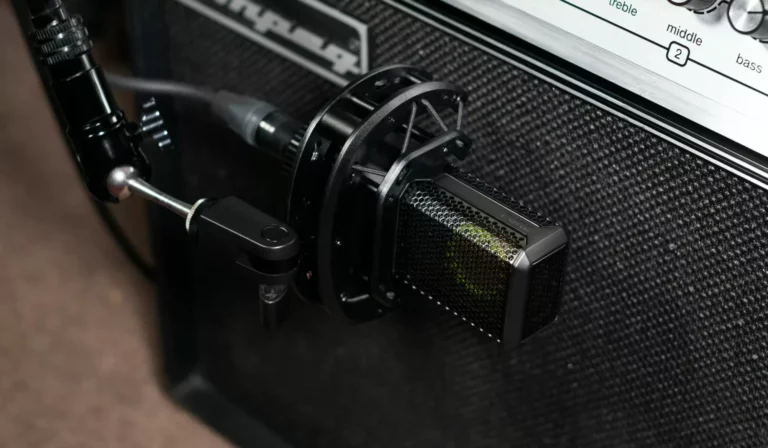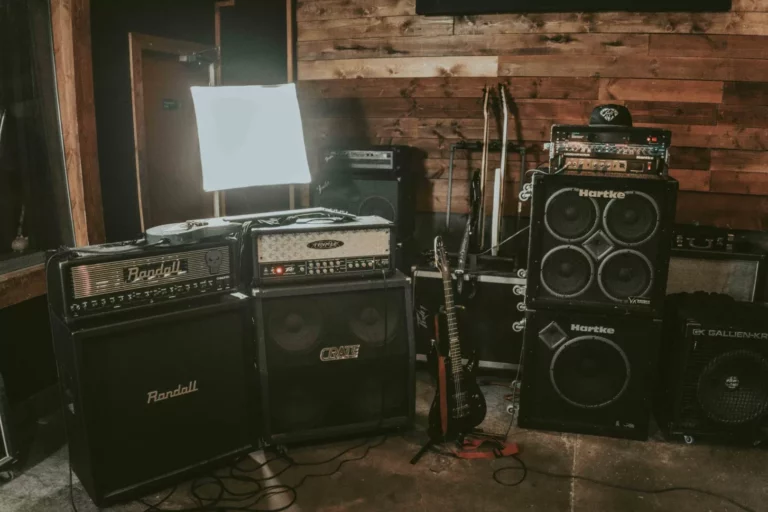
Are you wondering how hard it is to learn guitar?.. And how long it will take?
This article looks at how hard it is to master the instrument and the timeframes for learning it. We will delve into some beginner exercises that can help you to make a start and master the fundamentals.
Also, check out this popular music book that can help you stay focused and learn the basics of guitar!

How Hard to Learn Guitar & The Best Beginner Guitar Exercises
Contents
- How Hard to Learn Guitar & The Best Beginner Guitar Exercises
- How Hard Is It?
- How Long Does It Take?
- What Is The Best Way?
- Best Finger Exercises
- Scales and Arpeggios
- Open Chords
- Strumming Patterns
- Power Chords
- Best Beginner Songs
- Tuning by Ear
- Overcoming Challenges and Staying Motivated
- Enhancing Finger Dexterity
- Mastering Rhythm
- Transitioning Between Chords
- Breaking Down Complex Techniques
- Seeking Inspiration
- Conclusion
How Hard Is It?
Learning the guitar can be as hard or as easy as you make it.
If you start with pieces of music that are far too difficult for your current beginner level, you will likely not have a great experience and may also give up on learning faster than if you choose simpler music.
Use this guide to improve your skills with patterns and exercises that will improve your abilities and allow you to play more complex music.
How Long Does It Take?
Typically, a dedicated student can develop a basic proficiency on the guitar within several months to a year. However, it is worth noting that individual progress may vary significantly.
Some students may find themselves able to play simple songs within a few weeks of starting lessons, while others may require several years to achieve a similar level of skill.
The journey of learning the guitar is unique to each individual, and it depends on factors such as practice consistency, dedication, and personal learning style.
Basically, the more practice you do on your instrument the faster you will learn to play.
Setting realistic expectations and understanding that progress is unique to each individual is important.
Practicing every day is the key to making slow and gradual progress over time, no matter what you are learning, so keep going and don’t give up!

What Is The Best Way?
The best way to learn the guitar is to just do it!
You have made a start by reading this guide, but you could also look into buying music books to work through, and you could also invest in music lessons from a qualified guitar teacher.
Shopping around here is the key to success, as you want a teacher who understands you, your level, and your aims on the guitar.
Do not settle for the first tutor that comes along, or the cheapest tutor. Instead, try out a few tutors and find one that suits your style of learning.
Best Finger Exercises
Playing simple exercises that focus on strengthening individual fingers and improving coordination can help you develop your technique.
One useful exercise is playing four-finger patterns, starting with your first finger on the first fret, then playing the second finger on the second fret, third finger on the third fret, and fourth finger on the fourth fret.
Scales and Arpeggios
You can also try playing scales and arpeggios in different keys to practice moving your fingers smoothly and quickly across the fretboard.
Some beginner scales include major scales, minor scales, and pentatonic scales. The latter has only 5 notes and is therefore one of the simplest beginner exercises you can practice.
Open Chords
Open chords are chords that use open strings and are some of the easiest chords to learn. These chords include G, C, D, E, and A. Practice changing between these chords smoothly and cleanly.
Strumming Patterns
Strumming patterns are rhythmic patterns used to play chords. There are many different strumming patterns to choose from, but some good ones for beginners include the down-up strum, the down-down-up strum, and the bass-strum pattern.
Power Chords
Power chords are simple chords that are commonly used in rock music. They are played using just two or three fingers and are a good way to start learning how to play the lead guitar.
Power chords are often used in songs by bands like AC/DC, Nirvana, and Green Day.
Best Beginner Songs
Some popular beginner songs for guitar include “Love Me Do” by the Beatles, “Brown Eyed Girl” by Van Morrison, “Sweet Home Alabama” by Lynyrd Skynyrd, and “Bad Moon Rising” by Creedence Clearwater Revival.
Tuning by Ear
In standard guitar tuning, the notes of the guitar, from thickest to thinnest:
E, A, D, G, B, E
You should practice tuning your guitar by ear once you know the notes of each string that you are listening for. It can help to have someone teach you this first, or to use an automatic tuner.
Getting used to tuning your guitar by ear will help to train your ear and quickly tune your guitar before performances on your own and without an automatic tuner.

Overcoming Challenges and Staying Motivated
Some common challenges that aspiring guitarists may face are finger dexterity, rhythm, and transitioning between chords.
Breaking down complex techniques into smaller more manageable parts can help you to overcome these common problems, as can seeking inspiration and learning from your favorite guitarists.
Learning to play the guitar comes with its fair share of challenges, but with the right mindset and strategies, aspiring guitarists can overcome these obstacles and stay motivated on their musical journey.
Here are some more tips to help you address common challenges and maintain your enthusiasm:
Enhancing Finger Dexterity
Building finger dexterity is crucial for smooth and accurate guitar playing. One effective exercise to improve finger dexterity is the spider exercise.
This exercise involves practicing chromatic patterns that help strengthen and coordinate the fingers.
Another approach is to dedicate time to technical exercises that focus on developing finger independence. By incorporating these exercises into your practice routine, you can enhance your finger dexterity over time.
Mastering Rhythm
Rhythm is an essential aspect of guitar playing. To improve your rhythmic skills, it’s beneficial to practice with a metronome and focus on precision.
Start by playing simple exercises and gradually increase the tempo as you become more comfortable. You can also learn rhythm guitar parts from your favorite songs and play along with the recordings to develop a solid sense of timing and groove.
Transitioning Between Chords
Smooth chord transitions can be a challenge for beginners. One effective exercise is to practice transitioning between common chord progressions, such as the F, C, and G chords, in a repetitive manner.
Start by playing these chords slowly and ensure that each note sounds clean and clear.
As you gain confidence, gradually increase your speed and accuracy.
Additionally, exploring chord variations and practicing different techniques, like arpeggiated patterns and melodic fills between chord changes, can further improve your dexterity and make transitioning between chords more seamless.
Breaking Down Complex Techniques
When faced with complex techniques, it can be overwhelming. One effective strategy is to break them down into smaller, manageable parts.
By focusing on one aspect at a time, you can gradually master each component before integrating them into a cohesive whole.
This approach not only simplifies the learning process but also helps build confidence as you see progress in smaller increments.
Seeking Inspiration
Drawing inspiration from your favorite guitarists can be a powerful motivator. Listen to their music, watch live performances, and study their playing styles.
This can ignite your passion for the instrument and remind you of the possibilities that lie ahead.
Additionally, connecting with fellow guitar enthusiasts through online communities or local jam sessions can provide a supportive network and keep you motivated on your guitar journey.
Remember, progress takes time, so be patient and enjoy the process of becoming a proficient guitarist.
Conclusion
Remember, it’s important to start slowly and gradually increase your speed and complexity as you become more comfortable with the exercises.
Always focus on playing with good technique and accuracy, rather than speed or volume. And most importantly, have fun and enjoy the process of learning and playing guitar!
For more in-depth exercises, scales, and patterns for guitar, check out the article:
Beginner Guitar Exercises
Also, check out these books that can also help you to learn and improve your skills on the guitar.





